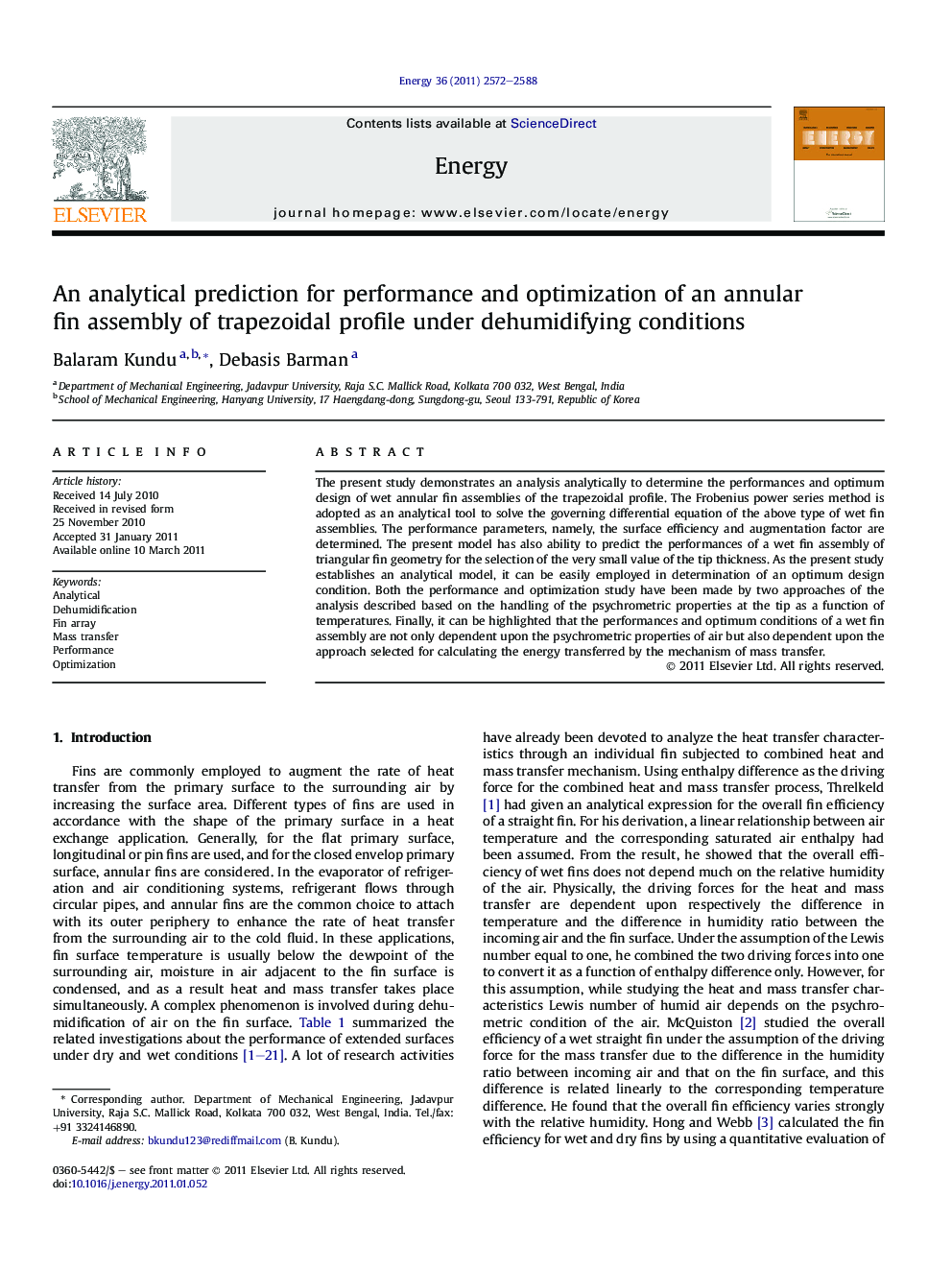| Article ID | Journal | Published Year | Pages | File Type |
|---|---|---|---|---|
| 1734489 | Energy | 2011 | 17 Pages |
The present study demonstrates an analysis analytically to determine the performances and optimum design of wet annular fin assemblies of the trapezoidal profile. The Frobenius power series method is adopted as an analytical tool to solve the governing differential equation of the above type of wet fin assemblies. The performance parameters, namely, the surface efficiency and augmentation factor are determined. The present model has also ability to predict the performances of a wet fin assembly of triangular fin geometry for the selection of the very small value of the tip thickness. As the present study establishes an analytical model, it can be easily employed in determination of an optimum design condition. Both the performance and optimization study have been made by two approaches of the analysis described based on the handling of the psychrometric properties at the tip as a function of temperatures. Finally, it can be highlighted that the performances and optimum conditions of a wet fin assembly are not only dependent upon the psychrometric properties of air but also dependent upon the approach selected for calculating the energy transferred by the mechanism of mass transfer.
►An exercise is devoted to analyze analytically the performance parameters of annular fin assemblies with straight tapered profile under dehumidifying conditions. ►Two approaches based on the psychrometric condition at the tip are suggested for determination of fin assembly performances. ►The analysis of wet fin assembly is carried out for both fully and partially wet surfaces. ►A new methodology has been described for the analysis of optimization of wet fin assemblies. ►The design conditions of present analysis are not only dependent upon the design-variables but also upon the method selected for mechanism of mass transfer.
